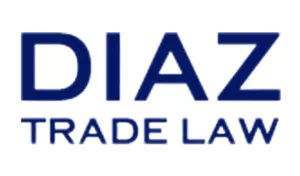Diaz Trade Law is enthusiastic to announce Bloomberg Law published another one of our articles, "U.S. Customs Targets Use of Forced Labor"! Below is the article reproduced with permission for your reading pleasure. We'd love to hear your feedback!
You can read the article here (where you'll have the ability to access all of the great hyperlinks).
Importers not adequately auditing their supply chains for use of forced labor are at risk of administrative and criminal enforcement. Imported merchandise produced with forced labor is subject to the Department of Homeland Security (DHS) enforcement. Such enforcement includes U.S. Customs and Border Protection's (CBP) right to detain, exclude, and/or seize imported goods and Homeland Security Investigation's potential criminal investigation. This article provides an overview of CBP's current enforcement environment in targeting and combatting the use of forced labor, practitioner's tips to avoid the use of forced labor, and tips on how to best defend against CBP enforcement actions.
Background
Currently, forced labor is the third most lucrative illicit trade, behind only drugs and weapons, and has an annual trade value of roughly $150 billion. In 2020, over 40 million people around the world were victims of some type of forced labor, including modern slavery and human trafficking.
Previously, under the "consumptive demand" clause in Section 307 of the Tariff Act of 1930, the U.S. effectively allowed for the importation of goods that had been partially produced by forced labor. However, since the enactment of the Trade Facilitation and Trade Enforcement Act of 2015, which eliminated the "consumptive demand" clause, DHS and its enforcement agencies have been greatly increasing measures to combat forced labor.
Section 307 of the Tariff Act of 1930 (19 U.S.C. 1307) prohibits the importation of all goods and merchandise mined, produced, or manufactured wholly or in part in any foreign country by forced labor, convict labor, and/or indentured labor under penal sanctions, including forced child labor.
CBP combats import risks, detects high-risk activity, deters non-compliance, disrupts fraudulent behavior, and thoroughly investigates allegations of forced labor. CBP's Forced Labor Division, established in 2017 within the Office of Trade, leads enforcement of the prohibition against importing goods made with forced labor. The division actively works to curb the illicit practice by examining various supply and investigating allegations of forced labor around the globe.
According to CBP, the agency does not target whole product lines or industries, rather it focuses on information regarding specific actors and their merchandise based on allegations received from industry and other sources, including CBP's Eallegation Portal. The agency acts on information concerning specific manufacturers/exporters and specific merchandise. Allegations may be reported anonymously.
The more detailed and timelier the information that is provided, the more likely the enforcement action can be successful. As an incentive for the trade community to assist, CBP will compensate parties that provide original information that leads to the recovery of any penalty, fine, or forfeiture of merchandise. The parties are eligible to seek compensation of up to $250,000, under 19 U.S.C. § 1619.
Withhold Release Order(s)
Pursuant to 19 C.F.R. § 12.42(e), if CBP is presented with reasonable, not necessarily conclusive, evidence of forced labor, CBP's commissioner may issue a Withhold Release Order(WRO). A WRO directs CBP officers at all ports of entry to withhold release of goods originating from a listed company or country. If CBP has conclusive evidence—i.e., probable cause—to make a determination that the merchandise in question was, in fact, produced whole in part by forced labor, the commissioner will publish a formal finding in the in the Customs Bulletin and Federal Register, per 19 C.F.R. § 12.42(f). Shipments subject to WROs may be subject to exclusion from entry.
These targeted sanctions have been especially effective at identifying certain nations, industries, and companies that employ forced labor. CBP provides the public with a list of all WROs and the findings of the investigations. Importers should take caution when sourcing similar products from the relevant entities/countries. The majority of WROs (14 out of the 25) implemented since 2016 have been directed at Chinese entities, including nine new WROs since 2019.
WROs Directed at Chinese Entities
Although China is the U.S.'s number-one trading partner, the increasing number of WROS being issued against Chinese manufacturers evidences the potential high use of forced labor. The impositions of WROs against China saw a recent uptick as a result of a July 1, 2020 seizure of hair products arriving from China. Following this seizure, CPB issued a Xinjiang Supply Chain Business advisory, cautioning U.S. stakeholders—businesses, individuals, academic institutions, research service providers, and investors—that continue to operate business with entities in Xinjiang.
Click here to continue reading . . .
Originally published in Bloomberg Law
The content of this article is intended to provide a general guide to the subject matter. Specialist advice should be sought about your specific circumstances.


